Micromobility is here to stay, and it’s changing how we experience urban life for the better. With Unagi’s membership program, you can enjoy all the benefits of a top-tier electric scooter without the sky-high price of ownership or the inconvenience of ride-sharing.
One of the greatest advantages of an electric scooter is its portability. You can zip through traffic, fold it up, and carry it into a coffee shop or office. But this very convenience can also be a vulnerability. If it's easy for you to move your scooter around, it's easy for someone else to do the same. Most electric scooters tip the scales at under 60 lbs. That means a thief can pick one up and walk away in seconds. They don't need elaborate tools or planning--it's a crime of opportunity.
An electric scooter left unattended and unsecured might as well have a sign that says "Take me." Think about how you treat your other valuables. Imagine leaving your $1000 smartphone sitting unattended on a park bench while you jog a few laps. Sounds absurd, right? Yet some scooter owners do the equivalent, leaving their rides unchained outside shops while they run "quick" errands. Unfortunately, that's all the time it takes for a thief to make off with your wheels.
So how do you keep your electric scooter safe when you're not riding it? The obvious answer is to lock it up. In this guide, we’ll go over the best ways to lock your electric scooter, including both physical and electronic locks. You’ll also learn about the most secure locking points on your scooter and practical tips to ensure your scooter stays safe.
How to lock your electric scooter: Locking technique
If you're using a physical lock, how you attach it matters. Here are some best practices:
- Make the lock as tight and snug as possible. Don't leave slack that gives a thief room to maneuver.
- Position the lock keyhole facing down. This makes it harder for a thief to tamper with.
- Keep Locks Elevated: Position your lock so it's off the ground. When the lock is near the ground, thieves can use a hammer to break it open.
- Use multiple locks if you're in a high-risk area or leaving your scooter for a long time. A U-lock plus a cable lock is a good combo.
- If your e-scooter has easily removable parts (like a battery), consider taking them with you.
Beyond Locking
Here are some additional tips:
- Register your e-scooter: Some cities and universities, such as the University of Maryland, require this, which can help with recovery if it is stolen.
- Use a GPS tracker: Some e-scooters have this built-in, but you can also buy separate trackers to attach to your scooter.
- Alarm Systems: Motion-sensitive alarms can deter thieves with loud sounds, drawing attention to their actions.
- Get insurance: Some renters or homeowners insurance policies may cover electric scooters. There are also specific electric scooter insurance policies available. The UNAGI subscription plan comes with theft insurance, meaning that you are covered in case of an incident during your subscription period.
- Personalize your e-scooter: Adding distinctive stickers or paintwork makes your scooter less attractive to thieves (who prefer generic-looking models) and easier to identify if stolen.
Finding the right secure locking point
Knowing where to place the lock on your electric scooter is just as important as the type of lock you choose. Not all parts of your e-scooter are equally secure, and some points are easier to break or unscrew than others.
The best secure locking points on your electric scooter
These are the:
Deck-stem junction
The connecting area between the deck and stem is the best place to lock your electric scooter. Why? It's built like a tank, usually aluminum or steel. This spot is structurally strong and designed to take the stress of riding. It's not going to give way easily, and that's exactly what you want in a secure locking point. Moreover, the shape of this area creates a natural "dead end" on both sides—at the deck and at the stem collar—making it extremely challenging for a thief to slide the lock through.
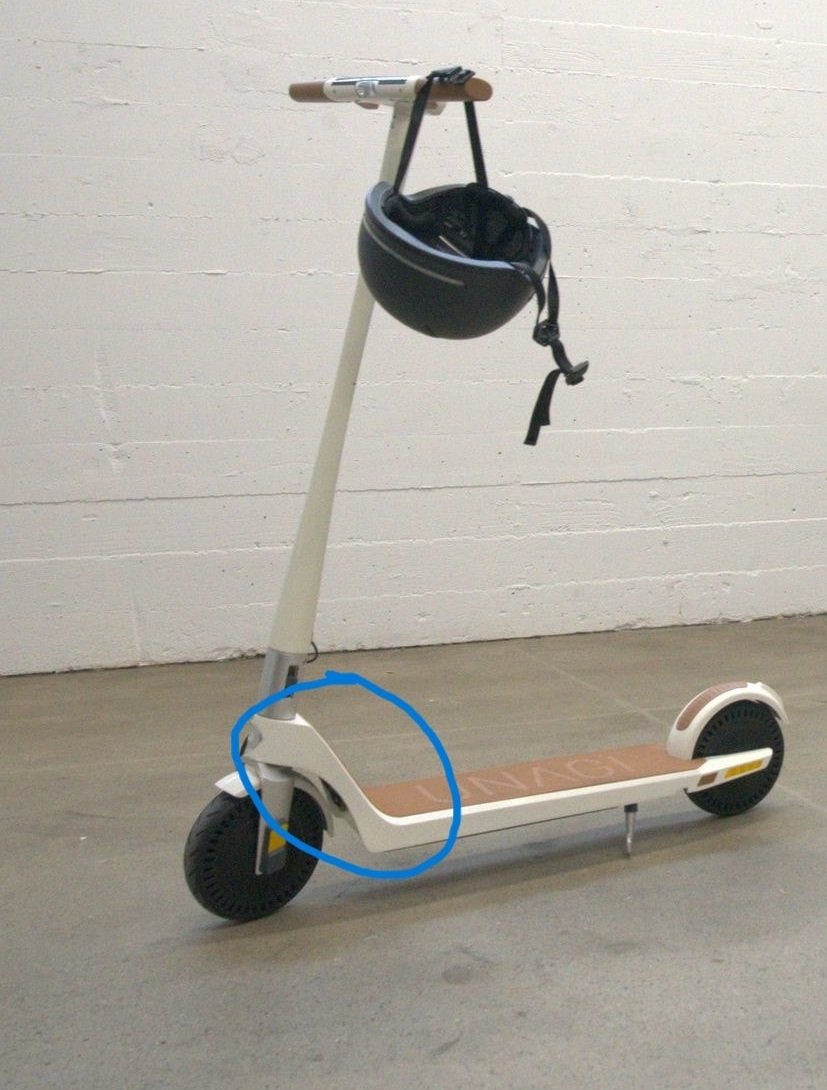
Carrying handle
Some models have a carrying handle built into the scooter's frame. If the handle is sturdy and welded securely as part of the frame, it can serve as another secure locking point. However, avoid using aftermarket carrying handles that can be easily unscrewed or are made of lightweight materials that can be broken. The key here is "built-in" and "welded".
Also, consider passing the lock through the rear swing arm or any other nearby solid part to reinforce the whole setup.
Points to avoid
The rule of thumb is that any part of the electric scooter that can be unscrewed or removed is not a good place to thread your lock. Some of these areas include
Stem
The stem is solid, but the handlebars are the weak point (unless they are not removable). A clever thief just needs to remove the handlebars (usually held by 2-3 Allan screws), and the whole thing slides off. It's unlikely, but possible.
Wheels
They come off too, given enough time. If you must lock through a wheel, ensure you also secure it to a fixed area like the stem collar or carrying handle before attaching it to an anchor point.
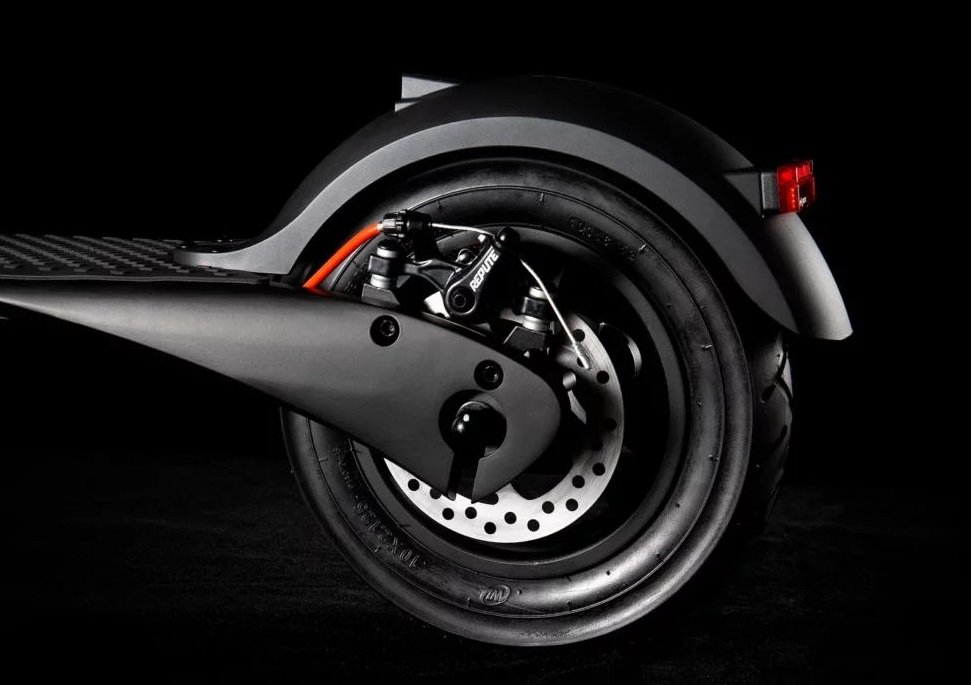
Fenders or accessories
These are places that can easily be broken due to the material used or easily opened if dealing with accessories (Remember, the thief can uninstall them just as easily as you installed them).
Where to lock your electric scooter
Even the beefiest lock won't help much if you choose a terrible spot to leave your scooter. Here are some tips for picking a good parking spot:
- Look for designated e-scooter parking areas. More cities are adding these as electric scooters become popular.
- Use bike racks if scooter parking isn't available.
- Choose a well-lit, high-traffic area. Thieves prefer to work where they won't be seen.
- Avoid blocking sidewalks or entrances. This is both considerate and reduces the chance of your scooter being moved by annoyed pedestrians or business owners.
- If possible, bring your e-scooter inside. Many offices and some stores will let you do this.
When using a physical lock, secure your electric scooter to something sturdy and immovable. Make sure the fixture is cemented into the ground and can't be lifted or broken. Bike racks, stair railings, sturdy poles, or dedicated scooter parking stations are ideal.
Avoid weak anchor points like metal fences or thin signposts. Thieves can easily cut through a fence or lift the electric scooter over a short post.
Physical locks
When it comes to physically securing your electric scooter, you've got a few options to choose from. Let's break them down:
U-locks
These are the gold standard for bike security, and they work well for electric scooters too. They consist of a solid, U-shaped shackle made from hardened steel. Top-tier electric scooter U-locks can resist attacks from power tools like bolt cutters and even angle grinders for a good while.
They are the best electric scooter locks you can get. The downside? They're heavy. We're talking up to 4 pounds of extra weight to lug around. They're also not the most flexible option - that rigid U-shape limits what you can lock your scooter to.
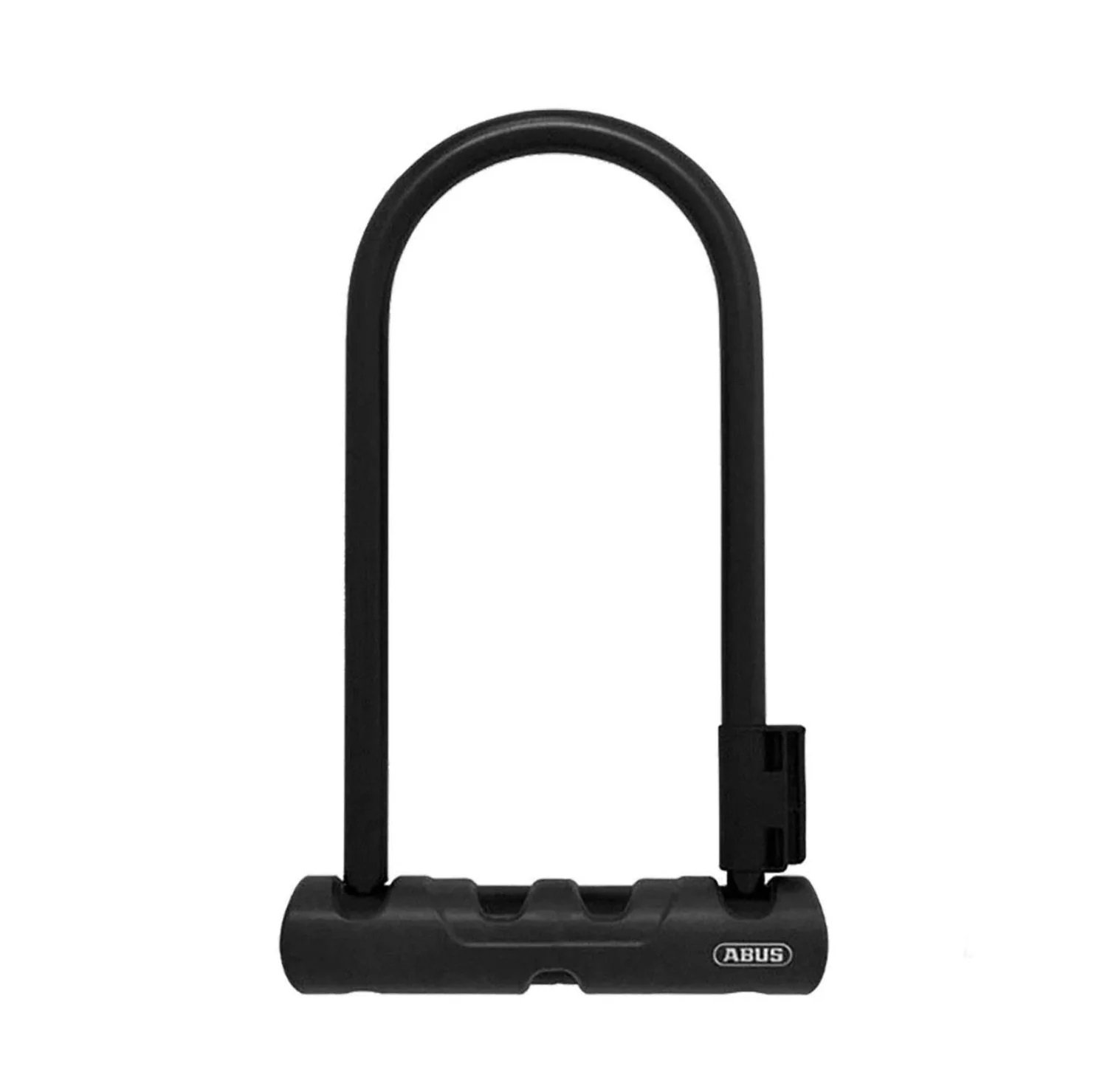
Chain locks
Chain Locks consist of a hardened steel chain that can be wrapped around various points on your electric scooter and a solid anchor point, like a bike rack.
A good hardened steel chain can rival U-locks for toughness, while giving you more flexibility in what you can secure your scooter to. You can wrap them around oddly shaped objects that a U-lock might not fit. The trade-offs are similar to U-locks--quality chain locks are heavy (some pushing 5 pounds), and the good ones aren't cheap.
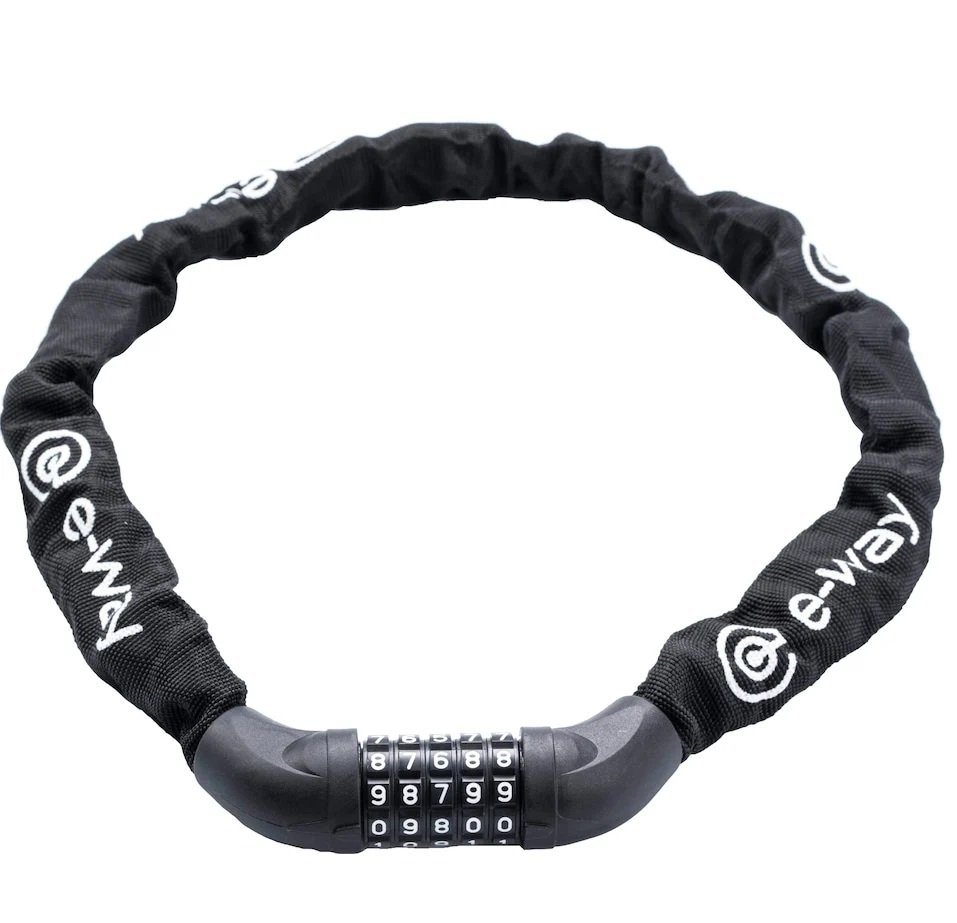
Folding locks
Folding locks are a nice compromise between security, portability, and convenience. These electric scooter locks consist of steel bars connected by rivets, allowing them to fold into a compact shape. They're more secure than cable locks, though not quite as bomb-proof as U-locks or heavy chains. The rivets can be a weak point, potentially vulnerable to drilling. But for many users, folding locks hit the sweet spot of decent security and easy carrying.
Many folding locks come with a frame mount that can be installed on your scooter's stem, making for convenient storage while you ride.
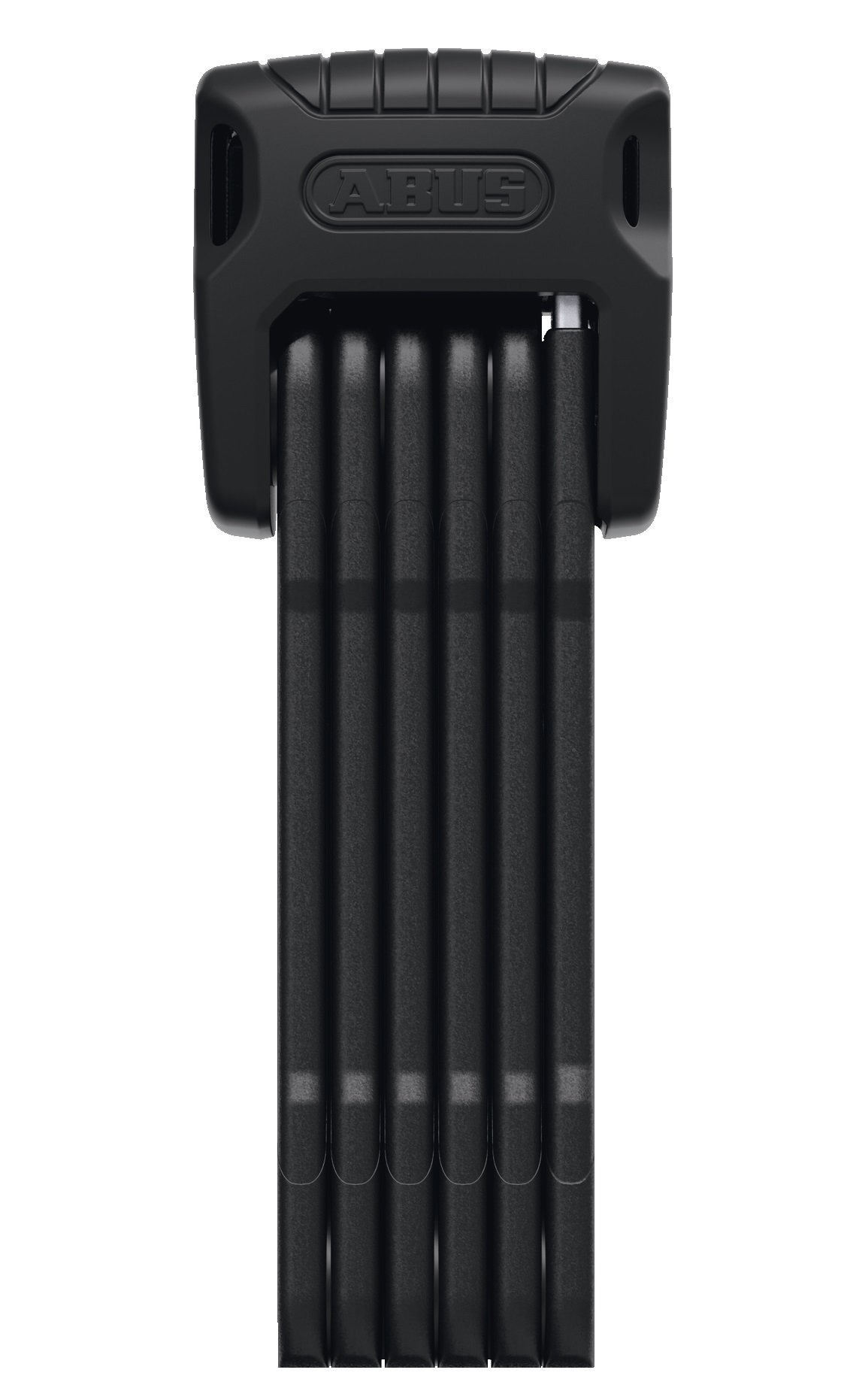
Cable locks
At the other end of the spectrum, we have cable locks- the lightest, most portable, and most convenient option in the lock world. They're typically very flexible and easy to carry. You can even wrap them around your scooter's stem or handlebar when not in use.
But they're also by far the least secure. Fine for quick pit stops in low-risk areas, but I wouldn't trust one as my only line of defense for long-term parking. They're best used as a secondary lock, in combo with something beefier like U-locks or chain locks.
One popular option is the UNAGI Cinch Lock. It’s an ultra-light, compact lock designed for quick stops. The Cinch Lock features multi-layer stainless steel bands and a resettable combination. While it's not a replacement for a U-lock, it’s a good option for situations where you only need to leave your electric scooter for a few minutes. Its portability (small enough to fit in your palm) makes it easy to carry in your pocket or backpack.

Disc brake lock with Alarm/Ring locks
Disc brake locks and ring locks take a different approach to security. Instead of tethering your scooter to a fixed object, they aim to make it unrideable. These compact devices clamp onto the wheel or brake disc, preventing it from rotating.
Disc brake locks are small, portable devices that clamp onto the scooter's brake rotor. They're typically made of hardened steel and are resistant to cutting and drilling. Many models come with built-in alarm systems, that shriek at 110 decibels if someone tries to move your electric scooter. They also come with a reminder cable that attaches to the handlebars, preventing you from accidentally attempting to ride off with the lock still engaged.
A ring lock, on the other hand, wraps around the wheel and through the spokes. However, they can be challenging to use on some electric scooters due to limited spoke space (dual-motor e-scooters have motor hubs in place). Some ring locks come with additional cables for securing the scooter to a fixed object, though these cables are usually thin and can be cut with wire cutters.
While these electric scooter locks are effective at preventing someone from riding away on your electric scooter, they have a significant limitation: they don't secure the scooter to a fixed object. This means a determined thief could still pick up and carry away the entire electric scooter. For this reason, disc brake and ring locks are best used with a U-lock or chain lock that anchors the scooter to a secure point.
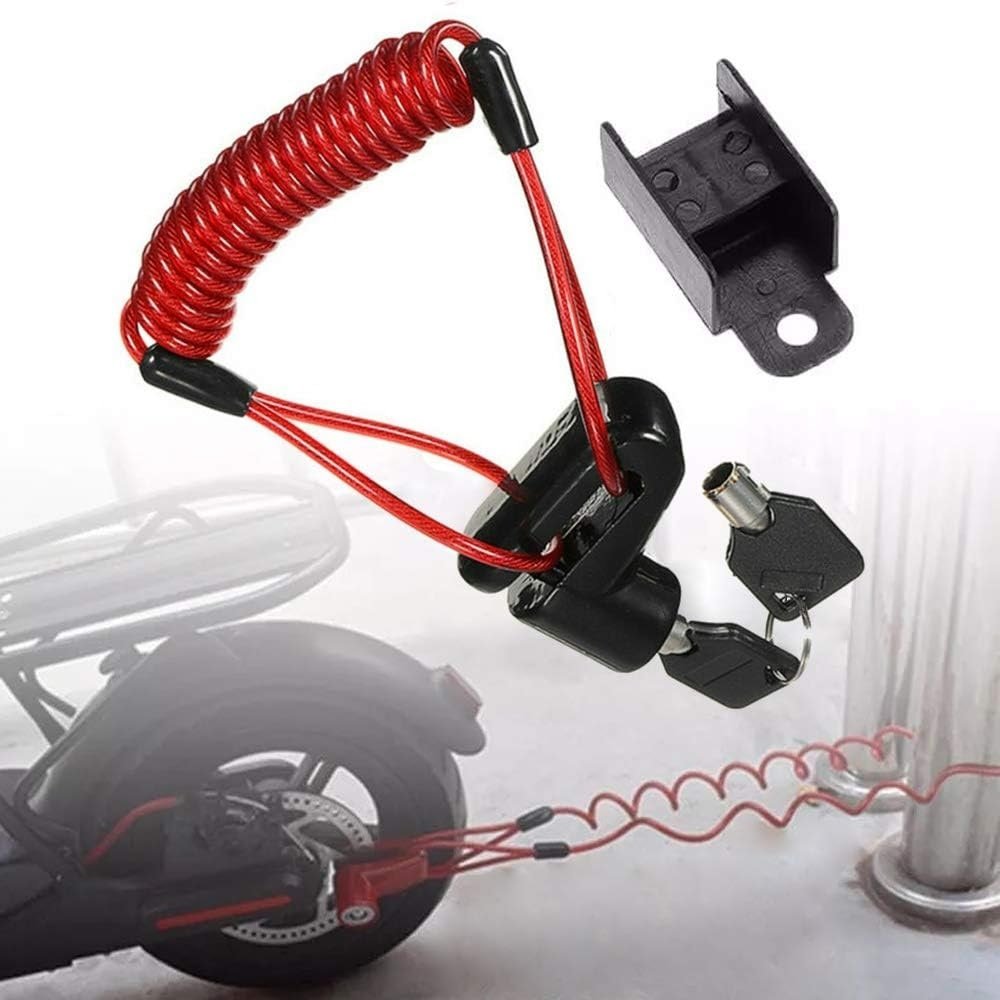
Electronic locks
Many modern electric scooters, including Unagi models, have built-in electronic locking features. These typically work through a smartphone app - park your electric scooter, tap a button, and presto, it's locked.
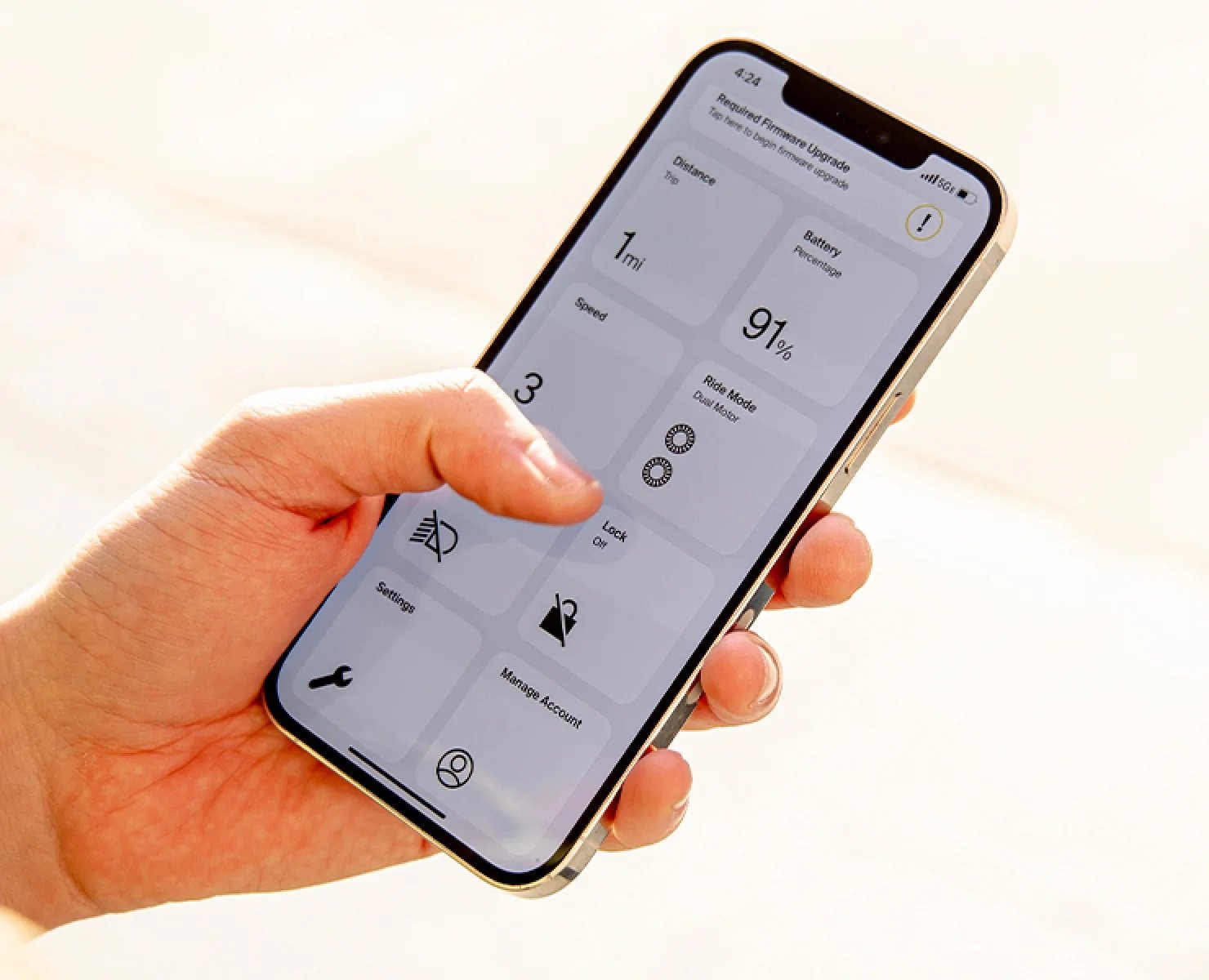
But what does "locked" mean in this context? It varies by model, but common features include:
- Motor Disable: The scooter won't power on or respond to throttle input.
- Alarm: If someone tries to move the locked scooter, it'll make a loud noise to deter thieves and alert you.
- Notifications: The app can alert you if someone's tampering with your ride.
- GPS Tracking: If your electric scooter does get nicked, you can track its location.
Electronic locks are incredibly convenient. There's nothing extra to carry, and locking/unlocking takes seconds. But they're not foolproof. They rely on your scooter having battery power, so they might not work if your battery dies. And while they'll stop someone from riding off, they won't prevent someone from picking up your electric scooter and dealing with the electronic lock later.
That's why the ideal setup is to use both electronic and physical electric scooter locks.
Other types of security features
Locks are great, but modern electric scooters pack some more security features.
Remote disabling
Some electric scooters let you shut off the motor through an app on your phone. It won't stop someone from picking up your scooter and walking away with it, but it does make it a lot less appealing to thieves. After all, what's the point of stealing a scooter you can't actually ride?
Key ignition systems
Just like starting a car, you need the physical key to power up the electric scooter. The Dualtron Thunder is an example of a scooter with such a system.
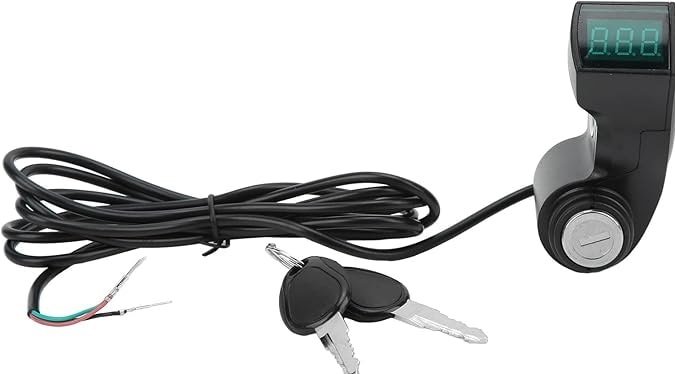
GPS trackers
In addition to the electric scooter locks, consider installing a GPS tracker on your electric scooter. Stick an Apple AirTag or similar device somewhere hidden on your e-scooter, and suddenly, you've got a fighting chance of getting it back if it does get stolen. The key here is to hide it well. Don't just slap it on the handlebars where any observant thief can spot and remove it. Tuck it inside the deck or stem. GPS tracking is particularly crucial in the first 24 hours after a theft.
Choosing the right physical lock
So, with all these options, how do you choose the best electric scooter lock? It comes down to balancing a few key factors:
- Security Level: How resistant is it to common theft tools?
- Portability: Will you actually carry it, or is it too heavy and cumbersome?
- Ease of Use: Does it fit your scooter's design? Is it quick to lock and unlock?
My recommendation? If security is your absolute top priority (which it should be), and you don't mind the extra weight, a high-quality U-lock or chain lock. As a backup, carry a lightweight cable lock like the UNAGI Cinch Lock. This can be useful for securing your front wheel or for times when you need a redundant security measure.
If you want something secure enough while being much more convenient to carry and use, get a good folding lock as your primary lock.
The Psychology of Security
Scooter theft is getting out of hand. In some cities, it's so bad that rideshare companies can barely turn a profit. You'd be foolish not to take it seriously.
The best way to keep your e-scooter safe is to never let it out of your sight. Carry it with you everywhere. Get a scooter bag to make this easier. But let's be honest: you can't always do that.
So you need a lock. Even a cheap lock helps.
Sure, a determined thief with the right tools could probably defeat it. But most thefts are crimes of opportunity. A visible lock, even a light one, is often enough to make a potential thief move on to an easier target.
But don't stop at one lock.
Relying on a single security method is like building a castle with only one wall. Layered security creates multiple obstacles, increasing the effort and time required to steal your electric scooter. Start with the scooter's built-in electronic lock. Then add a physical lock - maybe two. A cinch lock plus a sturdy chain or U-lock, for example.
The goal isn't to make your electric scooter theft-proof. That's probably impossible. What you want is to make stealing it such a headache that would-be thieves take one look and think "Nah, too much hassle. I'll try the next one."

Stay current with the latest U.S. electric scooter laws in our 2025 guide. Updated annually since our first comprehensive guide, ensuring you have the most recent state and city regulations to ride responsibly”

The Slack Core 920R is currently the fastest electric scooter in 2025 that you can purchase without the need for pre-order.

Our selection of the best electric scooters 2025 spans the fastest e-scooters to the most portable ones, the ones designed for city riding and off-road, the best scooters for rain, budget electric scooters for students, and more powerful ones for skilled riders.

The Unagi Voyager is the best lightweight electric scooter for adults and teenagers. It is the ultraportable sequel to its predecessor, the Unagi Model One Classic.

If you're wondering whether an electric scooter with a seat is right for you, this is a detailed article that would suit your need.

Understand which personal electric vehicle is best, the choice between an electric bike or electric scooter might already be made for you by some critical factors, including portability and storage capacity.

In the U.S., most states don't require a license. For those that do, they usually just ask for a regular driver's license or a learner's permit.

Yes, you can bring an electric scooter on a plane, but it needs to have a lithium battery smaller than 100 watt-hours, which most don't.

Manufacturers advise against riding electric scooters in the rain. The main reasons are: water can fry the electronics, make the ride dangerous, and void your warranty.

The basis and the premise of my work is that we either operate out of love or we operate out of fear...Time is currency. The coolest thing about the scooters is that it's really quick, and it goes uphill. From there, traveling more efficiently and having a good time doing it--I think that's the most important thing.

Cynthia Leu has a full plate. A tech worker by day, Cynthia spends her off time balancing the parallel lives of a powerlifter, entrepreneur, mental health advocate, and more. Riding Unagi helps this USMC veteran cut down on everyday…

https://www.youtube.com/watch?v=7m2hVBE62LY Rasheed Muhammad is sick of Los Angeles traffic. In order to preserve his sanity, Rasheed has traded his everyday driving habit for the portable and beautiful Unagi Model One. It’s an essential accessory for navigating LA streets -- and…

Rich Lee, Co-Founder of San Francisco’s SPRO Coffee Lab, wants to share his love for coffee with the world. He depends on riding Unagi to avoid the hassle of navigating the parking crunch in the booming Mission Bay neighborhood.…















